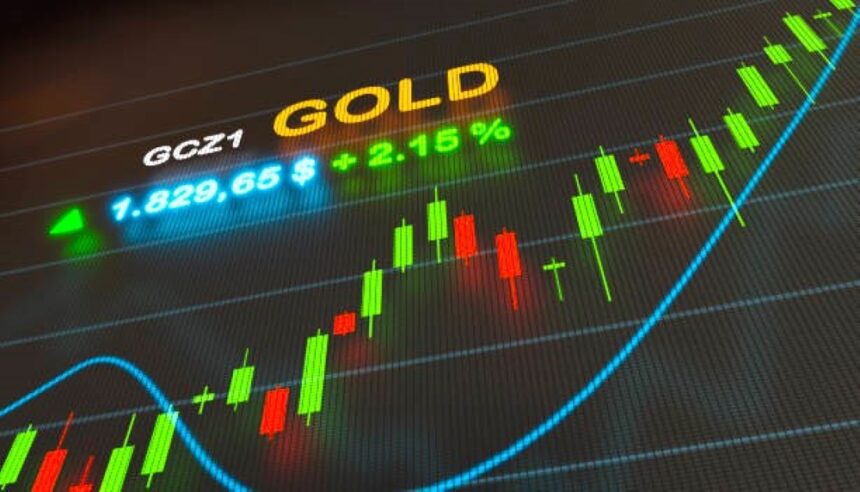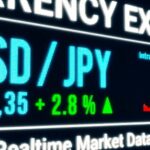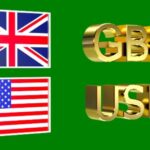Gold Price Trends Amid Market Uncertainty.
Gold (XAUUSD) continues to face a tug-of-war between bullish and bearish forces, remaining stuck in a multi-day trading range near its record high. While persistent concerns over former US President Donald Trump’s trade tariffs support the yellow metal, a cautious market sentiment ahead of key economic data and Federal Reserve (Fed) expectations limits its upward momentum.
Investors remain uncertain about how Trump’s proposed tariffs will impact global trade, fueling risk aversion and bolstering gold’s appeal as a safe-haven asset. At the same time, a fresh wave of selling pressure on the US Dollar (USD) and persistent inflation concerns have provided a floor for gold prices. However, hawkish expectations from the Fed continue to cap further gains, as higher interest rates make non-yielding assets like gold less attractive.
Market Drivers Supporting Gold Prices
1. Trade War Concerns and Geopolitical Uncertainty
One of the primary drivers of gold’s recent resilience has been the growing uncertainty surrounding the global economy due to Trump’s renewed push for tariffs. His administration imposed a 25% tariff on steel and aluminum, along with a 10% tariff on Chinese imports, since his first term in office. Now, with indications that new tariffs could be announced soon, market participants are concerned about the potential economic fallout.
Historically, trade wars have led to economic slowdowns and increased demand for safe-haven assets like gold. Investors fear that additional tariffs could disrupt supply chains, slow global trade, and trigger retaliatory measures from major economies, especially China. The resulting uncertainty has kept gold prices supported despite other headwinds.
2. Weakening US Dollar and Inflation Concerns
Another major factor underpinning gold prices is the recent weakness in the US Dollar. The USD has been declining due to economic concerns, with the greenback hitting its lowest level since December 10. A weaker USD typically makes gold more attractive to foreign investors, increasing demand and supporting prices.
Additionally, inflation fears continue to persist. According to the University of Michigan’s Consumer Sentiment Index, inflation expectations for the next year surged to 4.3%, the highest level since November 2023. This uptick in inflation concerns enhances gold’s appeal as a hedge against rising prices, prompting more investors to turn to the metal for wealth preservation.
Factors Limiting Gold’s Gains
1. Hawkish Federal Reserve Policy Expectations
While gold has seen steady support, its gains have been limited by expectations that the Fed will maintain higher interest rates for an extended period. The latest Federal Open Market Committee (FOMC) minutes and recent economic data suggest that the Fed remains committed to keeping borrowing costs elevated to combat inflation.
Gold, being a non-yielding asset, typically struggles when interest rates remain high. Higher rates increase the opportunity cost of holding gold compared to interest-bearing assets like bonds and treasuries. As a result, traders remain cautious about making aggressive bullish bets until the Fed provides clearer signals regarding its rate-cut path.
2. Upcoming Economic Data Releases
Investors are also holding back from taking strong positions as they await crucial economic data. The US Personal Consumption Expenditures (PCE) Price Index, the Fed’s preferred inflation gauge, is set to be released on Friday. If inflation remains sticky, it could reinforce the Fed’s hawkish stance, potentially putting downward pressure on gold.
Additionally, this week’s economic docket includes the release of the Preliminary US Q4 GDP print and Durable Goods Orders on Thursday. These reports, along with speeches from key FOMC members, will provide insights into the US economic outlook and influence the USD demand, thereby impacting gold prices.
Gold Price Outlook: Short-Term vs. Long-Term Trends
- Short-Term Outlook: Cautious Optimism
In the short term, gold prices are expected to remain range-bound as traders await key data releases. The interplay between inflation concerns, Fed policy expectations, and geopolitical risks will determine gold’s next directional move. If the upcoming PCE data signals persistent inflationary pressures, gold could face selling pressure. However, any signs of economic slowdown or dovish Fed commentary could provide a fresh boost to the yellow metal.
- Long-Term Outlook: Bullish Bias Remains
Despite near-term uncertainty, the broader outlook for gold remains bullish. Several factors support a long-term uptrend for gold, including:
Persistent Geopolitical Risks: Ongoing trade tensions, geopolitical conflicts, and economic instability in various regions continue to drive safe-haven demand for gold.
Structural Inflationary Pressures: Even if inflation moderates, underlying structural factors such as supply chain disruptions, wage growth, and fiscal policies could keep inflation elevated, maintaining gold’s role as a hedge.
Central Bank Gold Purchases: Central banks worldwide, particularly in emerging markets, have been increasing their gold reserves, providing additional support to prices.
Conclusion: A Market on Edge
Gold remains in a precarious position, balancing between bullish catalysts and limiting factors. While trade war concerns, a weakening USD, and inflation fears continue to support gold prices, the Fed’s hawkish stance and upcoming economic data releases create uncertainty.
For traders and investors, the key focus remains on Friday’s PCE inflation report, as it will provide a clearer picture of the Fed’s rate trajectory. Until then, gold is likely to trade within its current range, with a slight bullish bias due to ongoing geopolitical risks and inflation concerns.
In the longer term, the fundamental outlook for XAU remains strong, with economic and geopolitical uncertainties ensuring continued demand for the precious metal. While short-term fluctuations are inevitable, the broader trend suggests that gold could see further upside in the months ahead.









